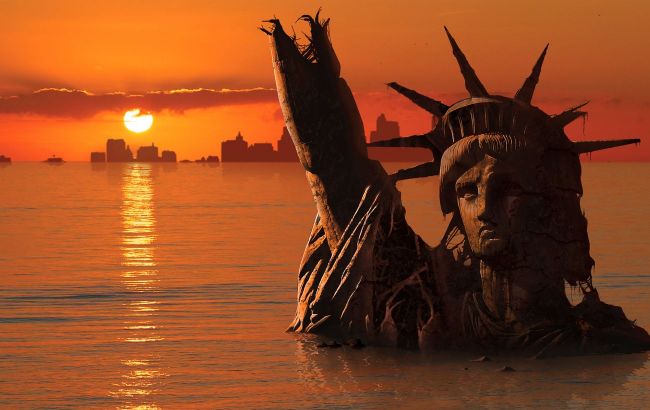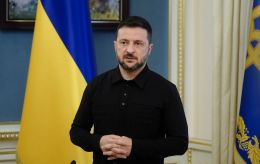Apocalypse gets closer: Malachy's prophecy about 2027
 After death of the Pope, the end of the world and Judgment Day became closer (photo: Getty Images)
After death of the Pope, the end of the world and Judgment Day became closer (photo: Getty Images)
Pope Francis died at the age of 88 on April 21 in his residence at the Vatican guesthouse, Santa Marta. In recent months, he had been seriously ill. In connection with his death, many have recalled an ancient 900-year-old Vatican prophecy that speaks of the end of the world. Read what this ancient Vatican prophecy says, and what it warns humanity about.
Following the news of Pope Francis’s death, people began recalling the 900-year-old prophecy of Saint Malachy. This ancient document is considered one of the most mystical relating to the Catholic Church. According to this manuscript, Pope Francis is the last pope before the end of the world.
What is the prophecy of Saint Malachy?
In the 13th century, the Archbishop of Armagh, an Irish monk named Malachy, allegedly received a mystical vision. In it, he saw all future Popes of Rome, beginning with Celestine II and ending with the last one. In total, this list includes 112 Popes, each represented by a short symbolic description.
The last on the list bears the Latin name "Petrus Romanus" – Peter the Roman. And it is precisely after his pontificate, according to the prophetic lines:
"In the final persecution of the Holy Roman Church, there will reign Peter the Roman, who will feed his flock amid many tribulations, after which the city of seven hills will be destroyed, and the dreadful Judge will judge the people."
This 900-year-old document was found relatively recently in the Vatican archives. And according to the ancient "Prophecy of the Popes," the end of the world may come as soon as 2027.
The document was first published in 1595 by Benedictine monk Arnold de Wyon. In 2024, a documentary film was released about Pope Sixtus V (1585–1590), who is attributed with the text of the prophecy. It is believed that his reign fell roughly in the middle of the predicted period, and that the end of the world will come exactly 442 years later – that is, in 2027.

"The Prophecy of the Popes" (screenshot)
Was Francis that same “Peter the Roman”?
Interpreters of the prophecy have long debated who exactly is the final pope. Formally, Francis is the 112th in the list. Although his name is not Peter, the fact that he chose the name Francis (in honor of Saint Francis of Assisi, who in turn is closely associated with prophetic symbolism) has given rise to many interpretations.
In addition, Francis has repeatedly made bold statements about the future of the Church, climate catastrophe, and the spiritual crisis of the world, all of which further fueled anxious sentiments.
Some interpret the ancient prophecy as a hint that Pope Francis is the last pope, while others believe the last will be the one who replaces him.
The end of the world or the end of an era?
Most modern researchers agree: even if the prophecy is not literal, its symbolism may point to the end of an important era in the history of the Catholic Church.
The death of Francis may symbolize not the apocalypse, but the conclusion of a centuries-long cycle and the beginning of something new, less defined but no less significant in meaning.
According to historians, the first 74 predictions about popes were remarkably accurate. But the subsequent phrases became vaguer. There is a theory that the text was forged at some point or that someone else continued writing it.
Still, there are coincidences that even skeptics find striking:
- "Gloria Olivae" ("Glory of the Olive"). Some believed this to be a prediction of Pope Benedict XVI, as the Order of Saint Benedict is associated with olive branches
- "De labore Solis" ("From the labor of the Sun"). A reference to Pope John Paul II, who was born during a solar eclipse
- "Peregrinus apostolicus" ("Apostolic pilgrim"). It is often linked with Pope Paul VI, who traveled extensively
It’s worth noting that this is not the only manuscript that predicts the end of the world. There is also the Book of Revelation, written at the end of the first century AD. It describes the end of humanity, not biblical events of the past. In some passages of this book, there are descriptions of drones, flying machines, robots, and even nuclear explosions.
What official sources say
The Vatican does not recognize the authenticity of the prophecy of Saint Malachy. It is considered a fabrication created in the 16th century for political purposes. However, given the remarkable correspondence between the descriptions in the prophecy and the real popes, doubts remain.
Earlier, we wrote about the selection of the new pontiff.
Sources: Catholic Encyclopedia (newadvent.org), Vatican News, National Catholic Reporter, "Prophecies of St. Malachy" (T. W. Coogan, 1994), Daily Mail

